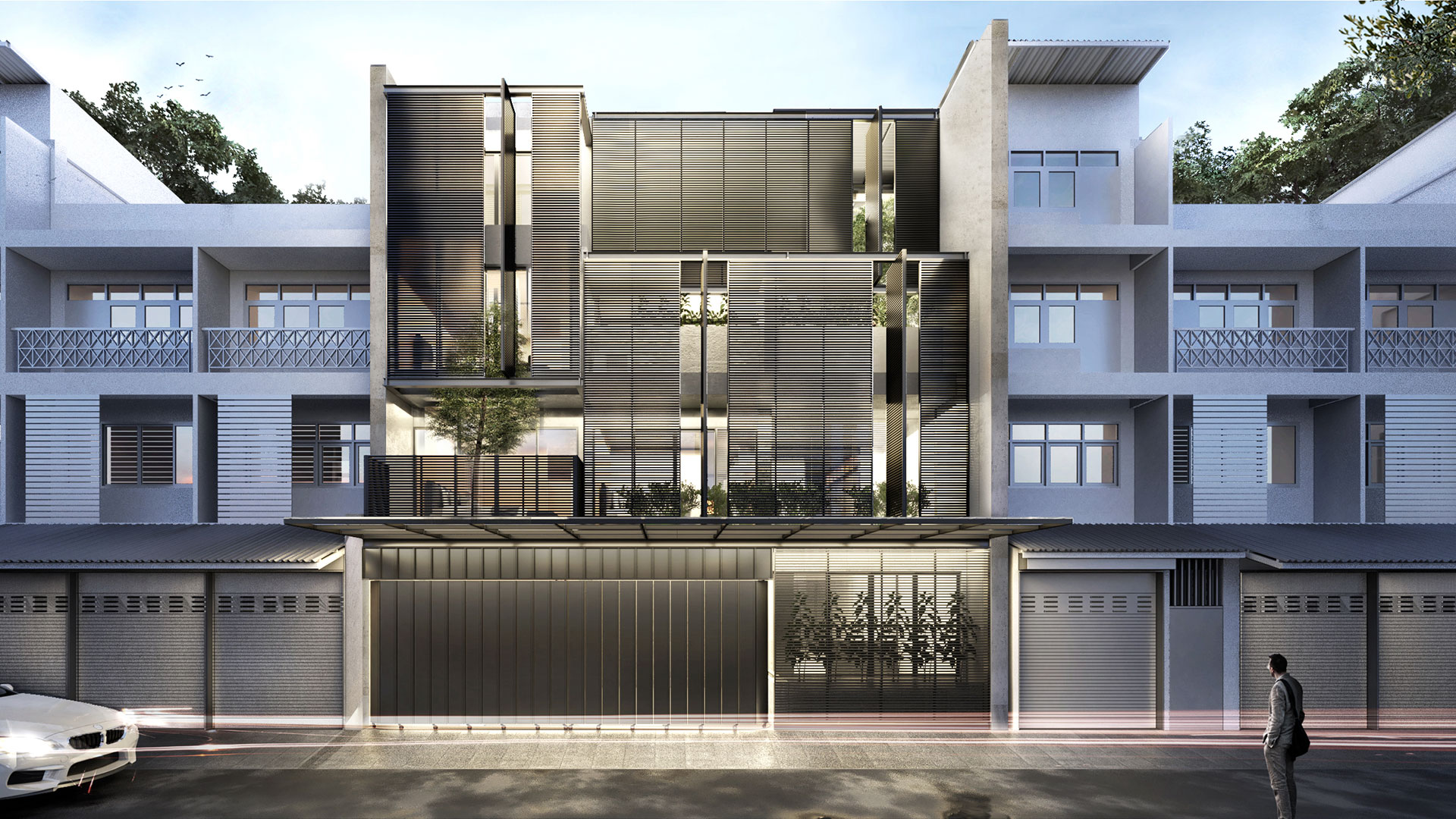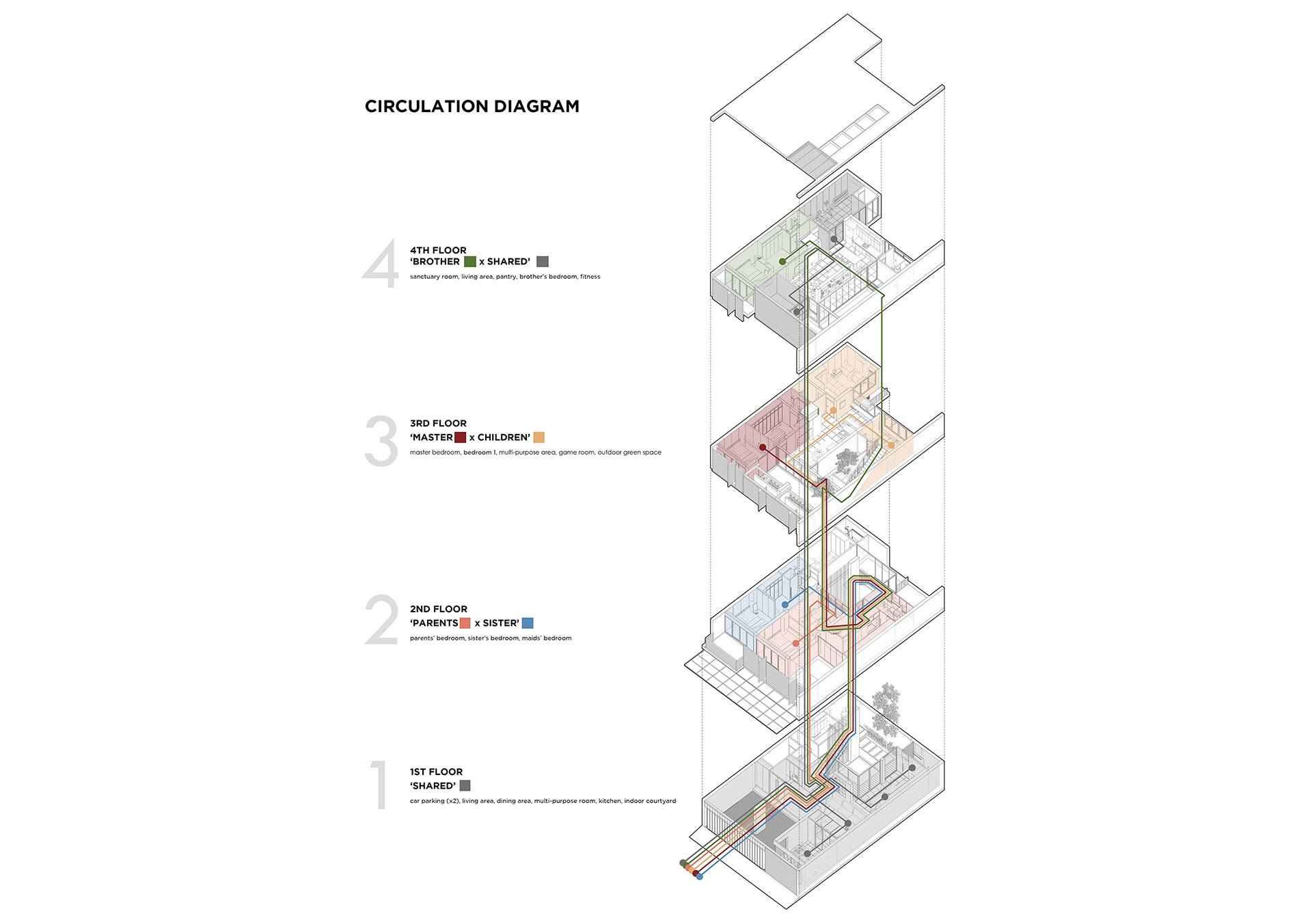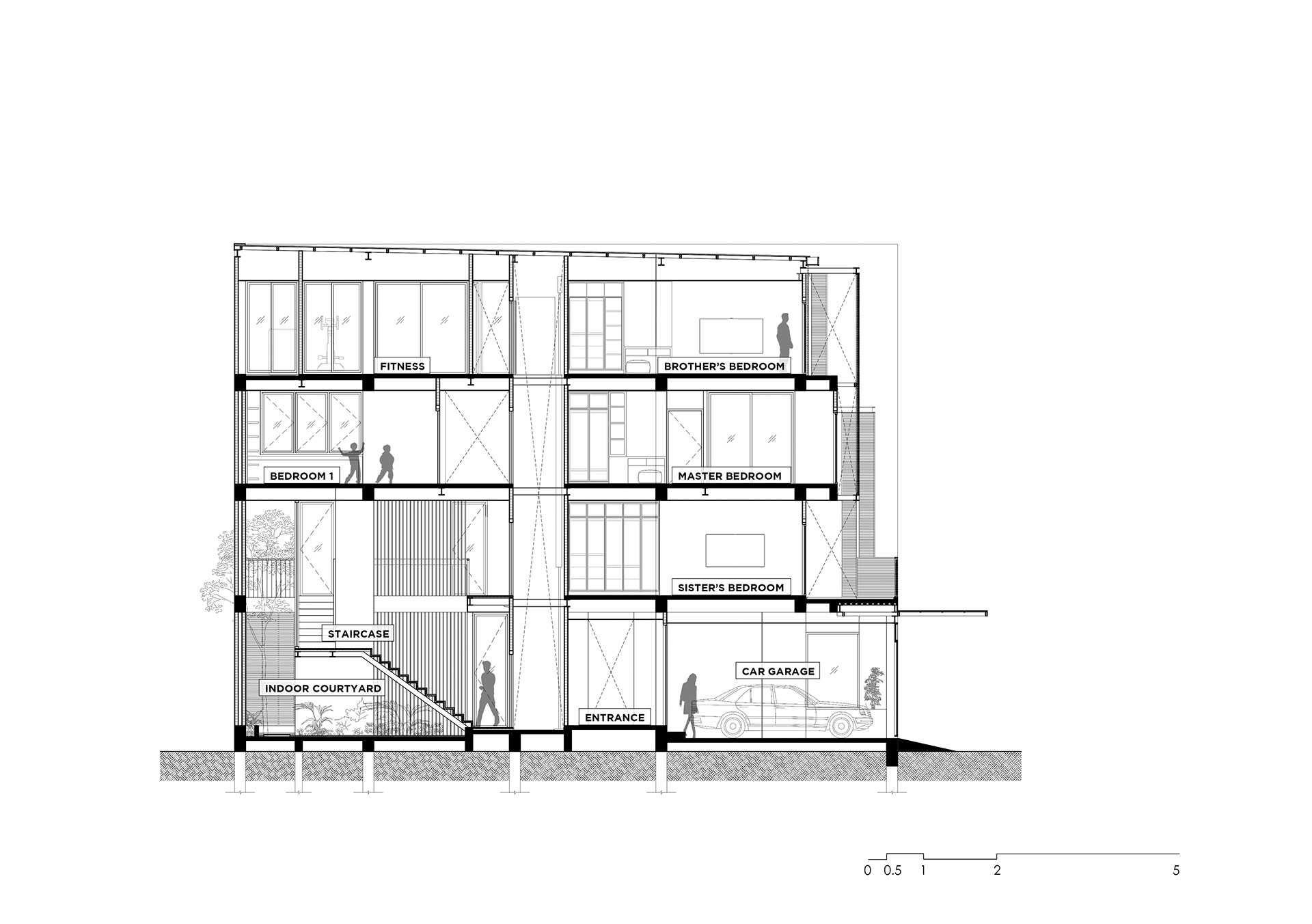-

co-habitat
PROJECT co-habitat TYPE private residence LOCATION Sathupradit 56, Yannawa, Bangkok, Thailand OWNER Prarinya Pornpithayalert SITE AREA 50 sq.wah USED AREA 760 sq.m. STATUS construction -

A 4-storey shophouse is adapted reuse for a multi-family which is an expanded family consist of a mother, a father, a sister, and two brothers who now have their own families with children. They need to share space together while still have their own privacy for each family. Likewise, some difficulties from this type of building which has no surrounded green space area and less void for natural sunlight, the primary concept is to create a space which allows natural daylight, ventilation, and indoor garden.
The first floor is a shared space for all residents comprises of 2-car parking space, a living area, an activity room, a dining area with pantry, a kitchen, a powder room, and a storage. An outdoor garden with wooden terrace and a fishpond is inserted at a back part of the house which is enclosed by a living and dining area. An outdoor staircase connects with glass corridor which looping around this courtyard through to the second floor. On the second, third, and fourth level are designed for grandparents, younger brother’s family, and elder brother’s family respectively, as each apartment on each floor for each family.
Skylight and double volume of each floor are located at different positions in order to share some parts of green area together, whilst allow indirect natural sunlight to thoroughly spread to every single space inside. Semi-outdoor staircase on the third floor is integrated with another courtyard which can be used as a shared space for both brothers’ family. An elevator is applied at the center of this house which is mainly for elderly and a family living on the top floor who always travel for their work, since it serves both wheelchair and luggage.
Façade and front gate are created, not only to conceal the overall space inside from a dense urban surrounding but also act as a safety device, as well as filtering heat from direct sunlight. Aluminum trellis have been used as a horizontal façade pattern, as it is lightweight, durable, and low maintenance material which is appropriate for an old structure.
[CIVIL ENGINEER | Yanapol Thitikavanont] -


| PROJECT | co-habitat |
| TYPE | private residence |
| LOCATION | Sathupradit 56, Yannawa, Bangkok, Thailand |
| OWNER | Prarinya Pornpithayalert |
| SITE AREA | 50 sq.wah |
| USED AREA | 760 sq.m. |
| STATUS | construction |
A 4-storey shophouse is adapted reuse for a multi-family which is an expanded family consist of a mother, a father, a sister, and two brothers who now have their own families with children. They need to share space together while still have their own privacy for each family. Likewise, some difficulties from this type of building which has no surrounded green space area and less void for natural sunlight, the primary concept is to create a space which allows natural daylight, ventilation, and indoor garden.
The first floor is a shared space for all residents comprises of 2-car parking space, a living area, an activity room, a dining area with pantry, a kitchen, a powder room, and a storage. An outdoor garden with wooden terrace and a fishpond is inserted at a back part of the house which is enclosed by a living and dining area. An outdoor staircase connects with glass corridor which looping around this courtyard through to the second floor. On the second, third, and fourth level are designed for grandparents, younger brother’s family, and elder brother’s family respectively, as each apartment on each floor for each family.
Skylight and double volume of each floor are located at different positions in order to share some parts of green area together, whilst allow indirect natural sunlight to thoroughly spread to every single space inside. Semi-outdoor staircase on the third floor is integrated with another courtyard which can be used as a shared space for both brothers’ family. An elevator is applied at the center of this house which is mainly for elderly and a family living on the top floor who always travel for their work, since it serves both wheelchair and luggage.
Façade and front gate are created, not only to conceal the overall space inside from a dense urban surrounding but also act as a safety device, as well as filtering heat from direct sunlight. Aluminum trellis have been used as a horizontal façade pattern, as it is lightweight, durable, and low maintenance material which is appropriate for an old structure.
[CIVIL ENGINEER | Yanapol Thitikavanont]
